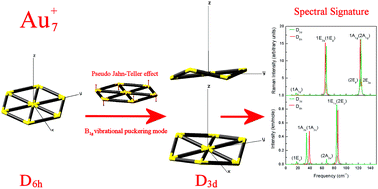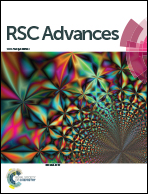Nonadiabatic structure instability of planar hexagonal gold cluster cation Au7 and its spectral signature
Abstract
Determining the structure for gold nanoclusters at which the 2D–3D transition occurs has been a challenging problem for both theoretical and experimental studies. For gold cation clusters, quantum chemistry calculations have produced controversial results concerning the last most stable planar structure, some indicating that corresponds to n = 7, whereas others conclude that at this value, the structure is already 3D. Experimentally, ion mobility spectroscopy measurements, assisted by DFT calculations, have been interpreted as a planar structure for Au7+. Here, we show that the usually assumed 2D non-degenerate ground state cluster structure for Au7+ with D6h symmetry is unstable against a puckering distortion, ending in a 3D stable structure with D3d symmetry. The analysis is based on the pseudo Jahn–Teller effect through vibronic coupling between the ground state and two excited states. This structure presents, in average, the same surface area than the 2D, being therefore compatible with experimental results. We discuss the effects the vibronic coupling would have on Raman, IR and UV-vis spectra. The study is based on a scalar and spin orbit relativistic DFT calculation in the Zero Order Regular Approximation (ZORA).


 Please wait while we load your content...
Please wait while we load your content...